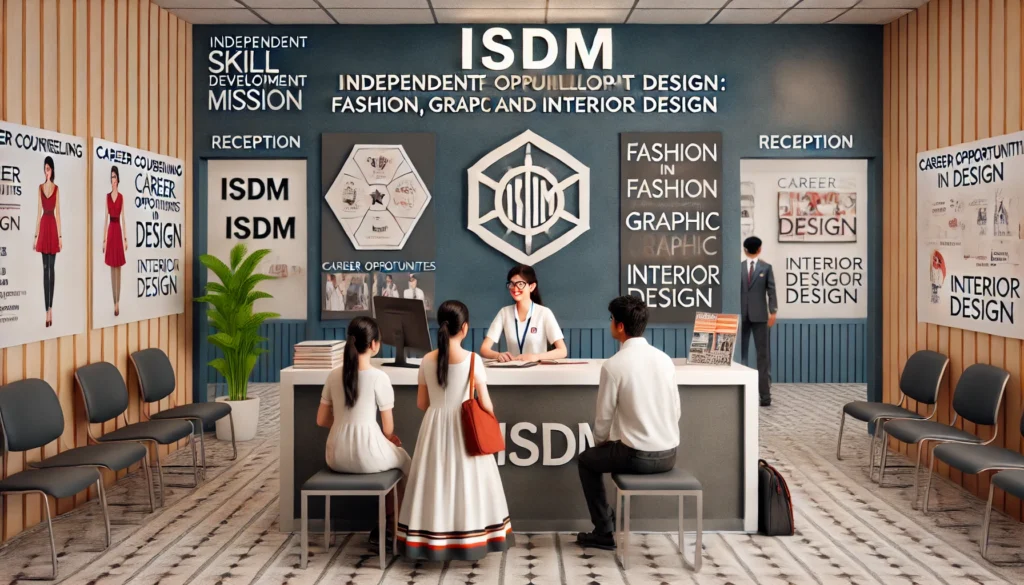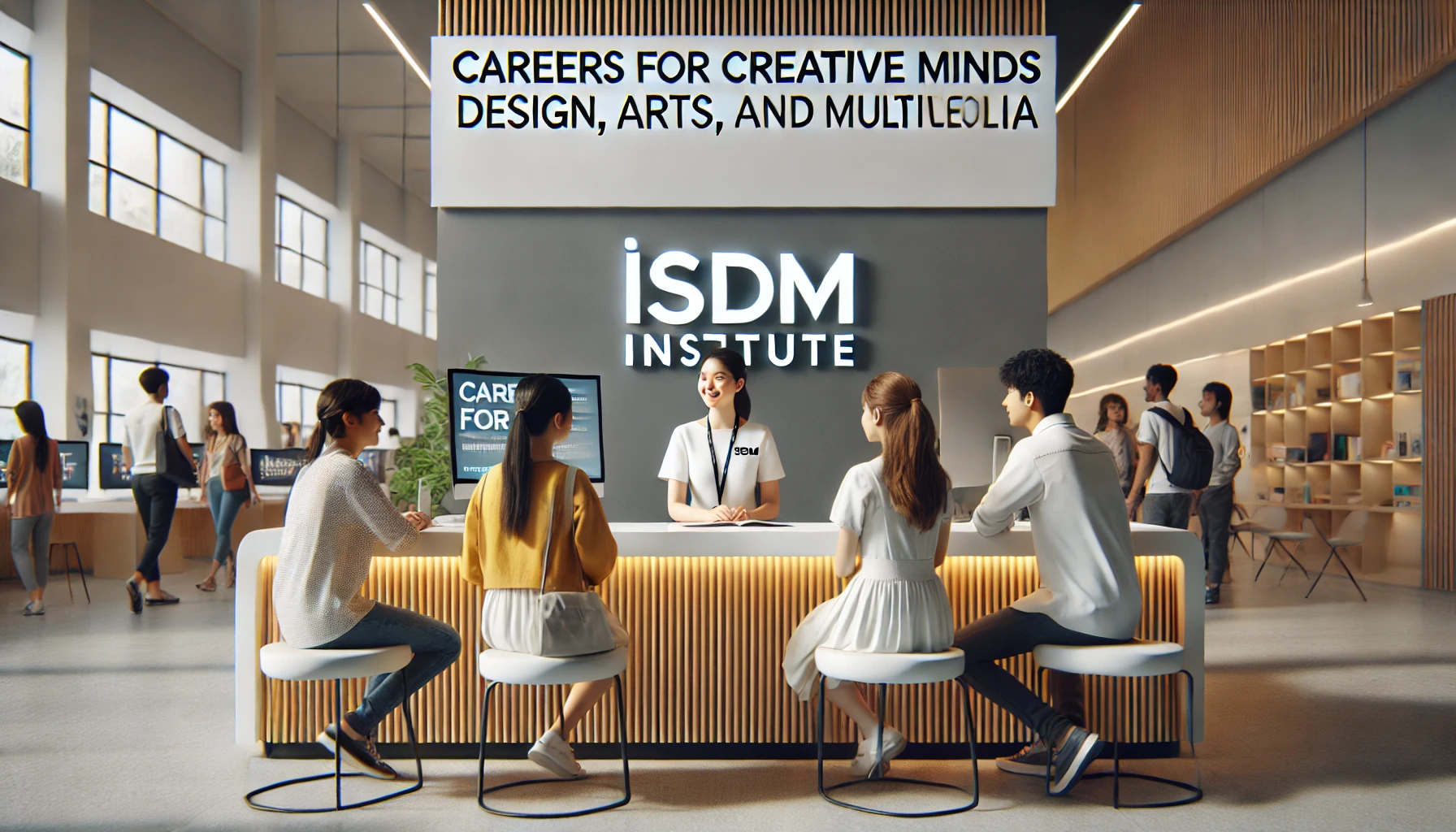Career Opportunities in Design: Fashion, Graphic, and Interior Design

When exploring career opportunities in design—whether it’s fashion, graphic, or interior design—each field offers unique avenues for creativity and professional growth. Here’s an overview of career opportunities in each area:
1. Fashion Design
Fashion design focuses on creating apparel and accessories. It blends artistic expression with practicality, as designers create clothing lines, accessories, or even entire collections.
Key Career Options:
- Fashion Designer: Create original clothing, accessories, or footwear, working for brands or establishing your own label.
- Costume Designer: Design costumes for films, TV, theater, or events.
- Fashion Illustrator: Bring design concepts to life through sketches and visual presentations.
- Fashion Stylist: Curate looks for photoshoots, celebrities, or media events.
- Fashion Buyer: Work for retail chains to select and purchase clothing that fits customer needs and trends.
- Textile Designer: Create patterns and designs for fabrics.
Skills Needed:
- Creativity, fabric knowledge, and trend forecasting.
- Proficiency in design software like Adobe Illustrator or Photoshop.
Educational Paths:
- Bachelor’s in Fashion Design or Fashion Merchandising.
- Certifications from fashion schools or online platforms.
2. Graphic Design
Graphic design involves visually communicating ideas using typography, color, and images. It plays a vital role in advertising, branding, digital media, and publishing.
Key Career Options:
- Graphic Designer: Create visual content for print and digital media, including logos, websites, ads, and brochures.
- Web Designer: Design website layouts, ensuring they are visually appealing and user-friendly.
- UX/UI Designer: Focus on user experience (UX) and user interface (UI) to improve website and app usability.
- Art Director: Lead creative teams in advertising or publishing, setting the visual tone of projects.
- Motion Graphics Designer: Create animated visuals for video content, marketing, or entertainment.
- Brand Identity Designer: Develop cohesive visual identities for companies, including logos, color schemes, and brand materials.
Skills Needed:
- Strong command of design software like Adobe Creative Suite.
- Understanding of typography, layout, and color theory.
- Branding and visual storytelling.
Educational Paths:
- Bachelor’s in Graphic Design or Visual Communication.
- Certifications in UX/UI, web design, or digital marketing.
3. Interior Design
Interior design combines functionality and aesthetics to create aesthetically pleasing, safe, and functional spaces for homes, offices, or commercial settings.
Key Career Options:
- Interior Designer: Design indoor spaces, focusing on layout, color schemes, furniture selection, and lighting.
- Residential Interior Designer: Specialize in designing homes, working closely with homeowners on personalizing spaces.
- Commercial Interior Designer: Work on offices, retail spaces, restaurants, and other commercial environments.
- Exhibition Designer: Create spaces for events, exhibitions, and trade shows.
- Furniture Designer: Design custom furniture pieces that fit into specific interior design themes.
Skills Needed:
- Knowledge of space planning, design trends, and materials.
- Proficiency in CAD software like AutoCAD, SketchUp, or Revit.
- Understanding of building codes and regulations.
Educational Paths:
- Bachelor’s in Interior Design, Architecture, or Spatial Design.
- Certifications in sustainable design, lighting design, or 3D modeling.
Common Aspects Across All Design Careers:
- Creativity and Innovation: Designers in all fields must have a strong creative vision and the ability to bring new ideas to life.
- Technical Proficiency: Mastery of design software is essential in fashion, graphic, and interior design.
- Trend Awareness: Designers need to stay updated on the latest trends and technologies in their respective fields to stay competitive.
- Portfolio Development: A well-rounded portfolio showcasing your work is crucial to securing opportunities and advancing in your design career.
Why ISDM is perfect choice for choose Career Opportunities in Design: Fashion, Graphic, and Interior Design
The Independent Skill Development Mission (ISDM) is an excellent choice for those pursuing career opportunities in design—whether in fashion, graphic, or interior design—because of its holistic approach to skill development, flexibility, and emphasis on industry-relevant education. Here’s why ISDM is perfect for individuals choosing a design career:
1. Focus on Practical Skills and Industry-Relevant Training
Design careers are skill-intensive and require a hands-on approach. ISDM programs focus on imparting practical skills rather than just theoretical knowledge, ensuring that students are job-ready. In the design industry, where portfolios and real-world experience speak louder than degrees, ISDM’s focus on skills-based learning is particularly beneficial.
For example:
- Fashion Design: Students gain practical knowledge in garment construction, textile technology, and fashion merchandising.
- Graphic Design: ISDM emphasizes the use of industry-standard software like Adobe Creative Suite, ensuring students master the tools they’ll use in their careers.
- Interior Design: Courses focus on 3D modeling, space planning, and sustainable design, equipping learners to meet modern design challenges.
2. Flexibility in Learning
Design students often need the flexibility to experiment, explore their creativity, and learn at their own pace. ISDM offers flexible learning paths through online courses, part-time programs, and workshops, making it easier for students to balance their education with internships or freelance work.
This is ideal for budding designers who want to gain real-world experience while learning, as they can easily balance their academic pursuits with hands-on projects, portfolio building, or freelance gigs.
3. Comprehensive Portfolio Development
A designer’s portfolio is their most critical asset. ISDM understands this and helps students develop strong portfolios by focusing on project-based learning. Whether in fashion, graphic, or interior design, students are encouraged to work on real-life projects, collaborate with industry professionals, and showcase their creativity.
ISDM’s mentorship programs allow students to receive feedback from industry experts, helping them refine their work and create portfolios that will make them stand out in competitive design fields.
4. Access to Industry Networks and Internships
Design is an industry where who you know can be just as important as what you know. ISDM provides students with access to an extensive network of industry professionals, internships, and workshops that offer real-world exposure.
For example:
- Fashion design students can connect with established designers and fashion houses for internships.
- Graphic design students may work on branding projects or collaborate with marketing agencies.
- Interior design students can participate in design expos or work with architectural firms.
Such exposure gives ISDM students a head start in their design careers by providing valuable networking opportunities and hands-on industry experience.
5. Focus on Emerging Design Trends and Technologies
The design world is constantly evolving, with new trends and technologies shaping its future. ISDM keeps its curriculum up-to-date with the latest trends, such as sustainable fashion, digital graphic design, and smart home interior design solutions.
- In fashion design, the rise of sustainable and ethical fashion is a key focus area.
- In graphic design, students learn about trends like motion graphics, AR/VR integration, and digital media design.
- In interior design, emerging fields like smart homes, sustainable design, and space optimization are integral to the curriculum.
Staying current with these trends is crucial for students looking to excel in their careers, and ISDM equips them with the knowledge and skills to do so.
6. Entrepreneurial and Freelance Support
Many designers choose to work independently as freelancers or start their own design studios. ISDM offers courses in entrepreneurship, business management, and digital marketing, which are essential for those who want to run their own businesses in the design field.
Whether a fashion designer launching their own label, a graphic designer freelancing, or an interior designer setting up a consultancy, ISDM provides the business acumen needed to navigate the competitive design industry.
7. Affordability and Accessibility
Compared to traditional design schools, ISDM offers affordable courses that make design education accessible to a broader range of students. This affordability, combined with the quality of education, makes ISDM an attractive option for aspiring designers who want to gain relevant skills without the heavy financial burden.
Conclusion
ISDM is the perfect choice for those pursuing career opportunities in fashion, graphic, or interior design because of its emphasis on practical, industry-focused skills, flexible learning options, comprehensive portfolio development, and strong industry connections. ISDM provides aspiring designers with the tools and opportunities they need to thrive in these creative fields.











